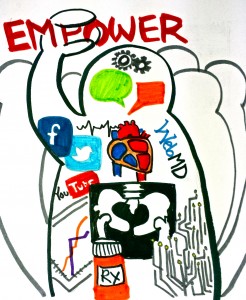When discussing ePatients, we’ve mostly talked about the patient perspective – how an individual can become more empowered, educated, electronics savvy, etc. – but what about the physicians?
Well, in interacting with ePatients, of course the physician themselves may also learn information they hadn’t known, learn to empathize more with the individuals, and even gain some tech skills in the process. These all sound great, but sometimes when a doctor is over worked and just plain tired from life, I’m sure the last thing they are thinking of is how to learn how to use a new app a patient has just brought in.
The culture of passive medicine is in part carried out by physicians’ attitudes towards such patients. Of course, if your patient is compliant to everything you say and doesn’t question any of your prescriptions or treatment notes – you’re life as a physician isn’t too difficult because everything is a one-way conversation. But with the incorporation of ePatients – the physician has to work to build that two-way relationship, which not all physicians are willing to do.

So for those physicians unconvinced by the new ePatient movement – how about a very concrete and quantifiable benefit? EPatients can help you make money.
Now this sounds a bit crude. Money should not be the core of medicine, but sometimes it is and to some people it is. And in this sense, ePatients can bring in money for physicians by increasing physician referrals.
It has been shown that referrals are most effective through word of mouth. If a previous patient likes the way you work, then you get a referral. It’s just that simple.

Now how do ePatients factor in? Well, if you think about the grand scheme of things, creating an ePatient means a closer relationship formed by the physician and patient by methods of direct and indirect communication. This communication should ideally make the patient feel more secure and welcome in the portion of the healthcare system you have introduced them to. So simply (and idealistically) speaking, you put in effort to be a more engaged doctor in the patient’s life and treatment plan, and eventually they will like you and get you referrals.
Now, all doctors should communicate with their patients because medicine is not just about the biological treatment, but the social and psychological treatment as well. Social aspects of physician-patient interactions can go a long way. But – if you are still not into this ePatient thing – then maybe take into account how the ePatient movement can factor into your business plan. Is it a little more appealing now?










